You know that moment when a game gets so intense you rip off your headphones or slam your laptop shut in panic? Trust me, I’ve been there too, and there’s no shame in that.
PC horror games have evolved way beyond the reach and influence of basic jump scares. Modern titles combine sophisticated AI with psychological manipulation and innovative graphics. These games create an experience that matches the terror of the scariest horror movies.

Our team tested dozens of scary games on PC – yes, with lights on, and we won’t apologize for that. The testing took us through nerve-wracking space station corridors and deep into psychological horror. This helped us pick 10 games that showcase the absolute best in digital terror.
These games will put your courage to the test. They stand as perfect examples of fear-inducing masterpieces that make you question every shadow in your room. The experience goes beyond just being the best PC horror games available today.
Alien: Isolation
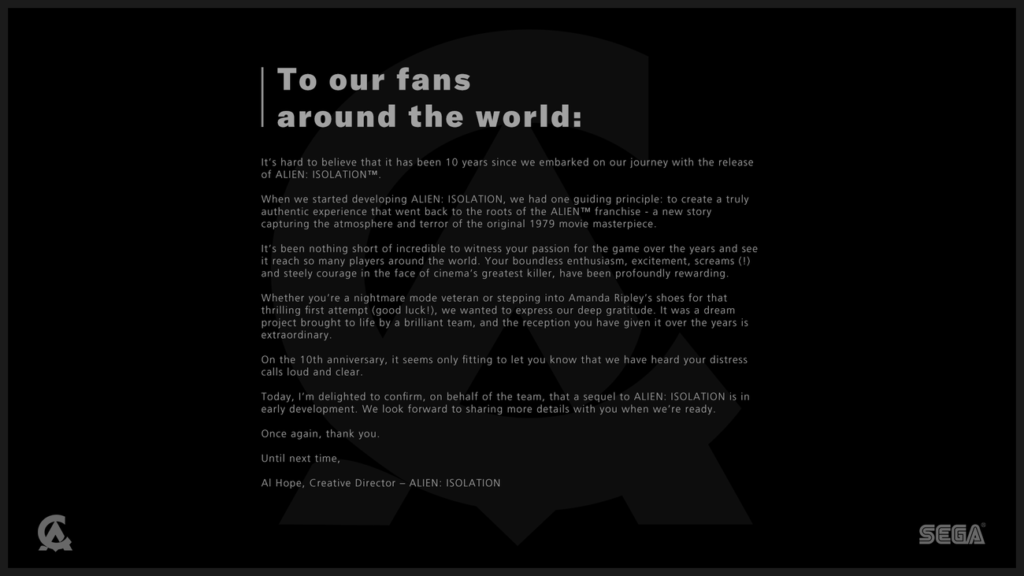
After spending countless hours hiding under virtual desks in Alien: Isolation, I can say it has transformed what we expect from scary games on PC. The game takes place 15 years after the original Alien film, where you find yourself trapped on a space station with one of gaming’s most terrifying predators.
Xenomorph AI and Stalking Mechanics
This game stands out as one of the best horror games on PC thanks to its groundbreaking “dual-brain” system. The Xenomorph operates on two distinct AI processes – one that knows your location, and another that hunts you down naturally. This creates a genuinely scary stalking experience where the alien searches for sounds and movement with deadly precision.
Atmospheric Space Horror
The game’s retro-futuristic design captures the original film’s look perfectly. You’ll find yourself sneaking through steam-filled corridors where the station’s failing systems create nerve-wracking mechanical groans and hisses. The attention to detail amazes me – saving your game requires vintage-style phone booths that leave you exposed for a few vital seconds.
Survival Tips and Strategies
My experience has taught me these significant survival tactics:
- Running is a death sentence unless absolutely needed
- The motion tracker shouldn’t get much use – the alien hears it within 1.5 meters
- Distractions work well with items like flares and noisemakers
- The flamethrower gives temporary relief but won’t kill the creature
The Xenomorph adapts to your tactics throughout the game and discovers new behaviors that keep you on edge. Hiding spots that worked early in the game become deadly traps as the alien learns your strategies – I found this out the hard way.
Amnesia: The Bunker

Image Source: Steam
The dark corridors of Amnesia: The Bunker turned out to be one of the most intense horror games I’ve played on PC. The game blends its historical setting with psychological terror perfectly. My character, a French soldier in 1916, ends up trapped in a WWI bunker with just a revolver and a noisy dynamo flashlight.
WWI Horror Setting
The game drops me into a nightmarish World War I battle. I wake up wounded and alone in a forward command bunker. This ranks among the scariest games on PC because the bunker becomes a character itself. Narrow corridors lined with sandbags, ammunition boxes tell silent stories of those who didn’t survive.
Dynamic Enemy AI
The beast stalking these corridors stands apart from other PC horror game monsters. This AI-driven creature learns and adapts to my strategies. My revolver might scare it away the first time, but each encounter needs more firepower to create the same effect. The creature moves through the bunker’s foundation and crawls through wall holes to check any noise I make.
Resource Management
The game’s intricate resource management system makes it unique. My survival depends on:
- A generator that needs fuel to power the bunker’s lights
- Limited space to carry tools, weapons, and survival items
- Hard-to-find ammunition and medical supplies
Random codes, item locations, and trap placements keep each playthrough fresh. Every decision matters – carrying a pocket watch to time the generator means giving up space for potentially vital items.
SOMA
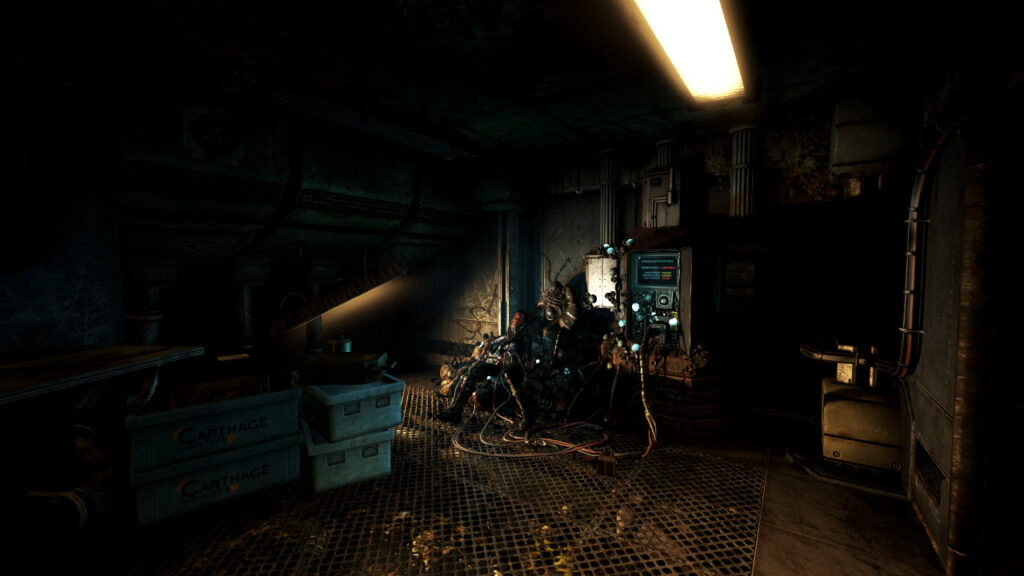
SOMA showed me that true horror isn’t just about monsters chasing you through dark corridors. This psychological horror masterpiece takes place in PATHOS-II, an underwater facility that sits at depths ranging from 64m to 4114m below the ocean’s surface.
Psychological Horror Elements
The game stands out as one of the scariest on PC because it makes me question my understanding of consciousness and identity. My encounters with robots who truly believe they’re human forced me to make gut-wrenching decisions about their fate. The game’s psychological effect comes from deeper questions about human nature rather than cheap jump scares.
Underwater Facility Atmosphere
PATHOS-II’s claustrophobic environment creates an unmatched feeling of isolation among PC horror games. The facility has:
- Geothermal power plants at Upsilon
- Research labs focusing on marine biology
- Secret installations unknown to most staff
Metal creaks under pressure constantly, and the ocean’s darkness creates a suffocating atmosphere that made me doubt my sanity more than once.
Story and Philosophy
The story made me think about consciousness and free will long after I finished playing. The game takes place in 2104, after a catastrophic event destroys Earth’s surface. I struggled with deep questions about identity and existence throughout my playthrough. The game rises above typical horror narratives by diving deep into consciousness transfer and the nature of self.
Visage

The haunted halls of Visage pulled me into one of the most unsettling horror games I’ve played on PC. This psychological horror gem packs 15 hours of mind-bending gameplay with stunning graphics and exceptional sound design.
P.T. Inspired Design
Visage stands as a spiritual successor to the legendary P.T. I found that there was a massive suburban home from the 1980s serving as the game’s setting. The story puts me in the shoes of Dwayne Anderson, trapped inside a house with a dark history. The previous families met tragic ends – murdered by their own members, driven to madness, and many more took their own lives.
Sanity Mechanics
The game’s clever sanity system directly impacts my survival. My sanity drops if I:
- Stay in darkness too long
- Witness supernatural events
- Face paranormal activity like doors slamming or lights failing
Lighters, pills, and candles help me keep my sanity in check. Managing these resources adds an extra layer of tension to the whole experience.
Chapter Breakdown
The game unfolds across four main chapters that unlock once you find specific items throughout the house. I found that there was a panda drawing that starts Lucy’s chapter, while Dolores’ chapter needs a mirror key. Rakan’s story begins with a crutch near the TV room. The final chapter challenges players to collect seven VHS tapes. Each tape carries haunting themes like Pride, Negligence, and Affliction.
Darkwood
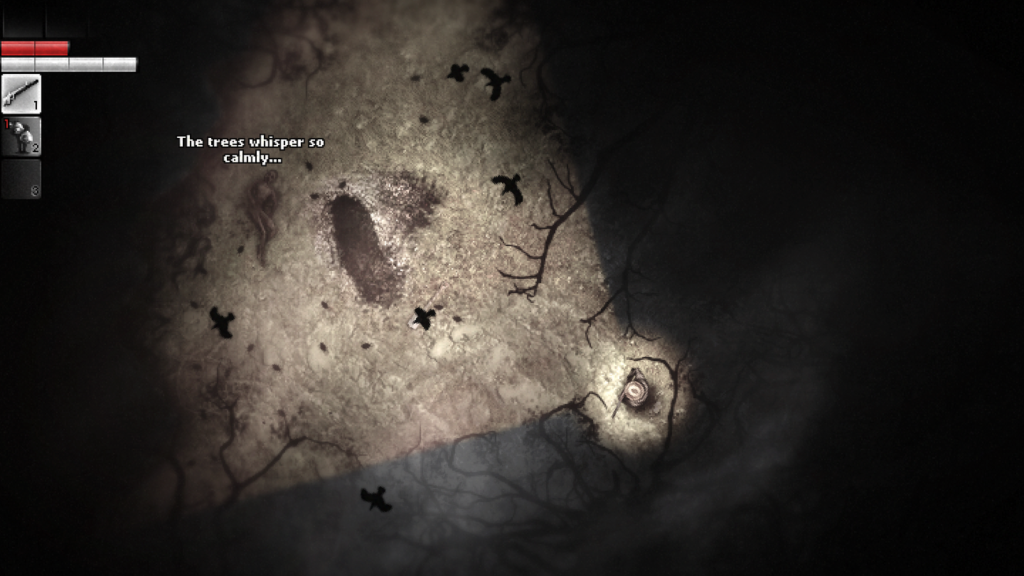
Looking down at my character from above, I’ve found that Darkwood offers a completely different view of PC horror games. This indie gem shows that terror doesn’t need fancy 3D graphics or jump scares to keep me awake at night.
Top-down Horror Breakthroughs
The game’s unique top-down view creates an eerie experience. I can only see what’s in my character’s line of sight. The rest fades into darkness, which makes me paranoid about threats lurking beyond my vision. The sound design heightens this tension. Each creak and rustle might signal danger from any direction.
Day/Night Cycle Effects
The game runs on a gripping day/night cycle. Each in-game day lasts 22.5 minutes. Every second matters in this world:
- Daytime (18 minutes) lets me scavenge and explore
- Nighttime (4.5 minutes) tests my survival skills
- Dawn offers a quick break to repair and craft
Crafting and Survival
This game stands among the best horror titles on PC with its extensive crafting system of over 200 items. My survival depends on smart resource management. Tough choices come up often. Should I use my last gasoline to power the generator for light? Or should I save it for the wood saw to build barricades? Each night brings fresh horrors. Mysterious knocks at my door and self-moving furniture make every survival decision vital.
Outlast

My hands trembled as I clutched my camcorder, and I found why Outlast stands among the best horror games on PC. Playing as investigative journalist Miles Upshur taught me that survival sometimes means documenting the horror rather than fighting it.
Camera Mechanics
This camcorder becomes a lifeline through the nightmare with features like:
- Night vision that helps navigate pitch-black areas
- Zoom function to scout dangers ahead
- Battery management adding constant tension
- Audio capture to document evidence
The asylum forces me to search frantically for batteries, knowing that a dead camera in darkness could spell my doom.
Mount Massive Asylum Setting
My spine tingles every time I think about the asylum’s history. Murkoff Corporation reopened it in 2009 after its abandonment in 1971. The facility reveals disturbing evidence of illegal experiments and CIA-backed MKUltra operations. Blood-spattered hallways, decaying wards, and haunting echoes of tortured inhabitants tell their own story.
Stealth Gameplay
This game ranks among PC’s scariest titles because it focuses purely on stealth-based survival. Players quickly learn that fighting isn’t an option – getting found leaves only two choices: run or hide. The game builds psychological tension by forcing players through tight spots and around corners, with nightmarish creatures potentially lurking beyond. Hiding under beds or in lockers while pursuers methodically search the room creates some of gaming’s most intense moments.
Phasmophobia
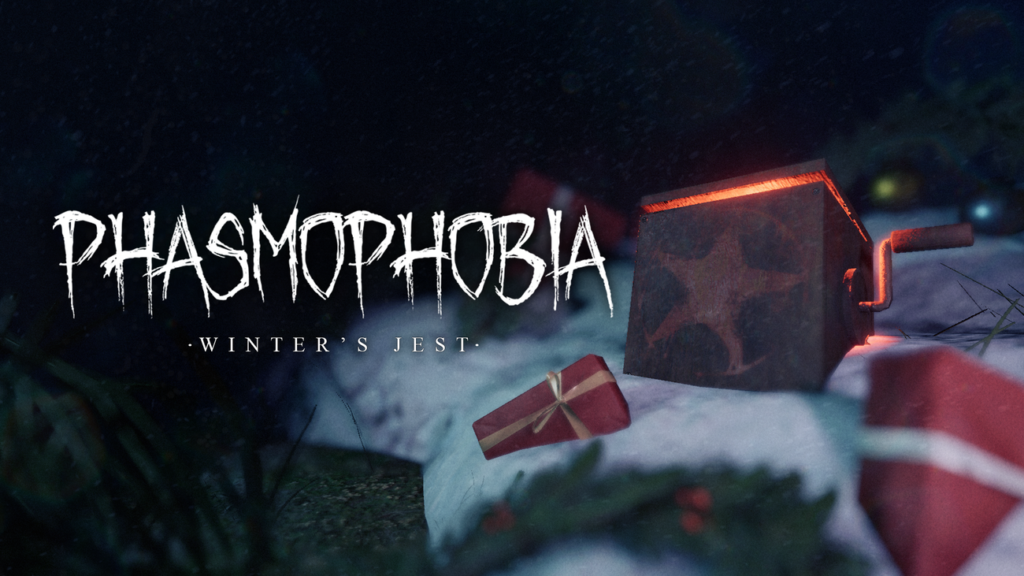
Playing Phasmophobia with my friends taught me that fear becomes more intense when others share the experience. This game stands among the best horror titles on PC and reshapes the scene of ghost hunting into a multiplayer experience where teamwork means survival.
Multiplayer Horror Dynamics
Success in this 4-player cooperative nightmare depends on team coordination. My team splits roles between active investigators and support members who watch everything from our mobile command center – a modified surveillance van. The game features five difficulty levels and weekly challenges that make each ghost-hunting session terrifying.
Ghost Types and Evidence
We need to identify more than 20 different ghost types that come with their own personalities and behaviors. Evidence collection requires:
- EMF readers and Spirit Boxes
- Thermometers and UV lights
- Night vision cameras and motion sensors
- D.O.T.S projectors and writing books
Voice Recognition Features
The game’s advanced voice recognition system makes it unique among PC horror games. Ghosts listen through my microphone and react to every word. Experience taught me to choose my words carefully – using a ghost’s name might trigger it, while the right Spirit Box questions provide vital information. The tension often makes me whisper, especially during those heart-pounding moments when the ghost starts hunting.
Dead Space (2023)
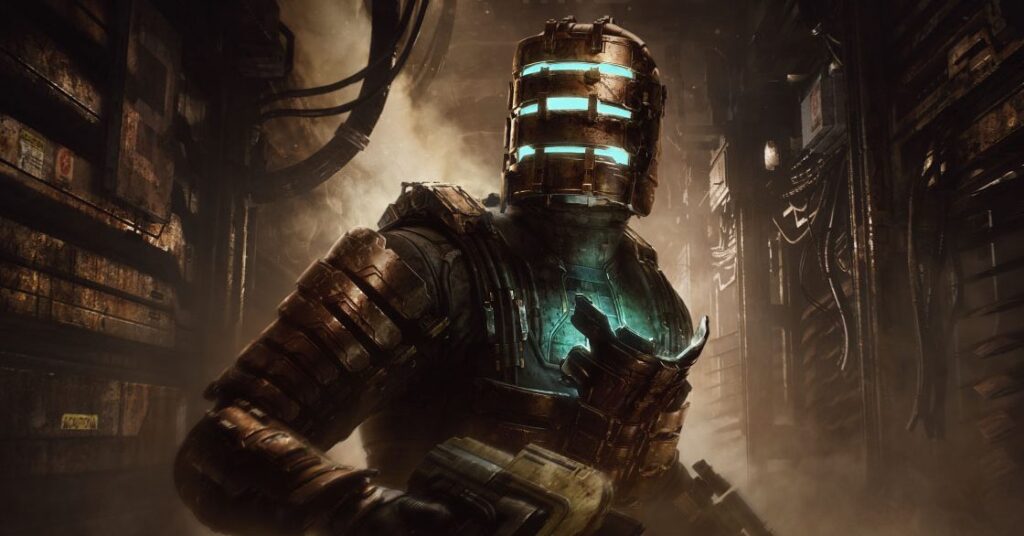
My plasma cutter stays ready as I walk through the USG Ishimura’s corridors. Dead Space (2023) takes engineering horror to new heights. This remake of one of PC’s best horror games shows that some nightmares deserve another visit.
Necromorph Combat
The game’s signature dismemberment system packs more punch than before. These space zombies can only die when you take them apart piece by piece. My survival depends on a few key strategies:
- Taking out their legs first slows them down
- Using kinesis to turn the environment into a weapon
- Making every shot count with precise limb targeting
- Staying alert for necromorphs that play dead
USG Ishimura Environment
The ship stands as a horror design masterpiece that runs without loading screens. The Ishimura’s industrial look creates an oppressive atmosphere. Low-lying fog and settling dust add to my claustrophobia. Shadows become death traps thanks to the remake’s dynamic lighting system.
Remake Improvements
This game ranks among PC’s scariest titles because it builds on everything that made the original terrifying. The “Intensity Director” system keeps the tension high by triggering events based on how well I play. Zero-G sections now let me move freely, and the improved dismemberment system shows flesh and sinew tearing away from necromorphs in detail. The ship’s new layout rewards exploration with hidden rooms and corridors.
Little Nightmares 2
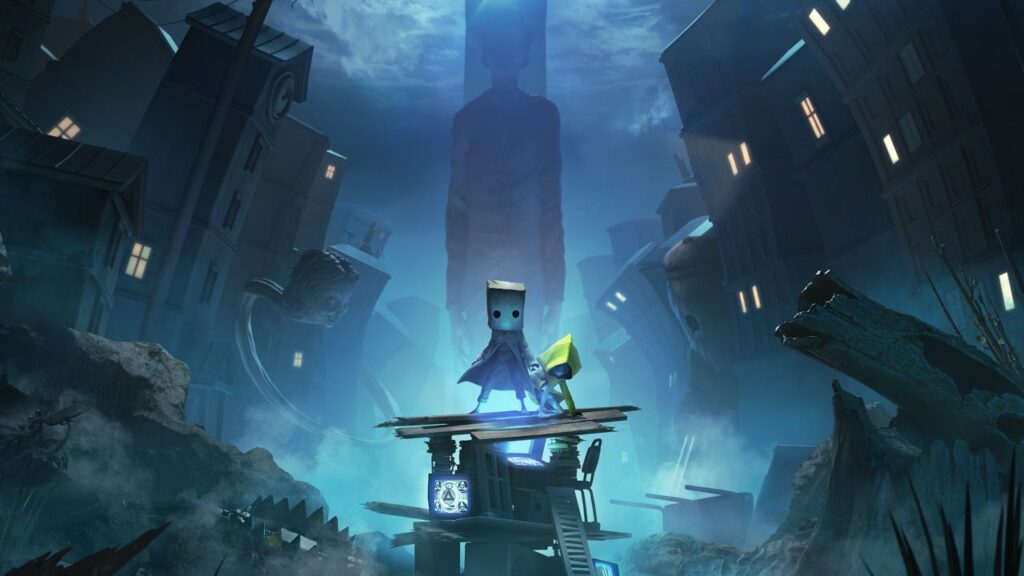
Image Source: Bandai Namco
Little Nightmares 2 stands out as one of the most artistically distinctive horror games available on PC. My time exploring its twisted corridors revealed a unique blend of childhood fears and surreal horror that creates something both beautiful and terrifying.
Environmental Storytelling
The Pale City serves as the main backdrop for this haunting tale. Rain-soaked streets contain scattered empty clothes that suggest their owners simply disappeared mid-step. The game’s world seamlessly transitions from eerie woodlands to a deadly trap-filled school. Each location adds another layer to this deeply unsettling narrative.
Monster Design
The enemies are nightmarish masterpieces of design. The Teacher stands out as the most memorable creature with her endless neck that stretches through corridors and vents – a design inspired by the Japanese yokai rokurokubi. Her design features:
- A stern face that draws inspiration from Nurse Ratched
- Animations that pay homage to classic horror films
- A neck that developers had to triple in length to maximize terror
Platforming Horror
This game earns its place among PC’s best horror titles by masterfully combining platforming with genuine scares. Six proves invaluable as an AI companion who adds gameplay depth and emotional weight to the adventure. She assists with environmental puzzles and helps reach higher platforms. Precise timing requirements and stealth mechanics create constant tension, particularly during chase sequences where death comes instantly after a single mistake.
The sound design amplifies the horror perfectly. Every environmental creak and groan builds tension while muffled moans from the city’s tortured inhabitants create an atmosphere of endless dread.
Alan Wake 2
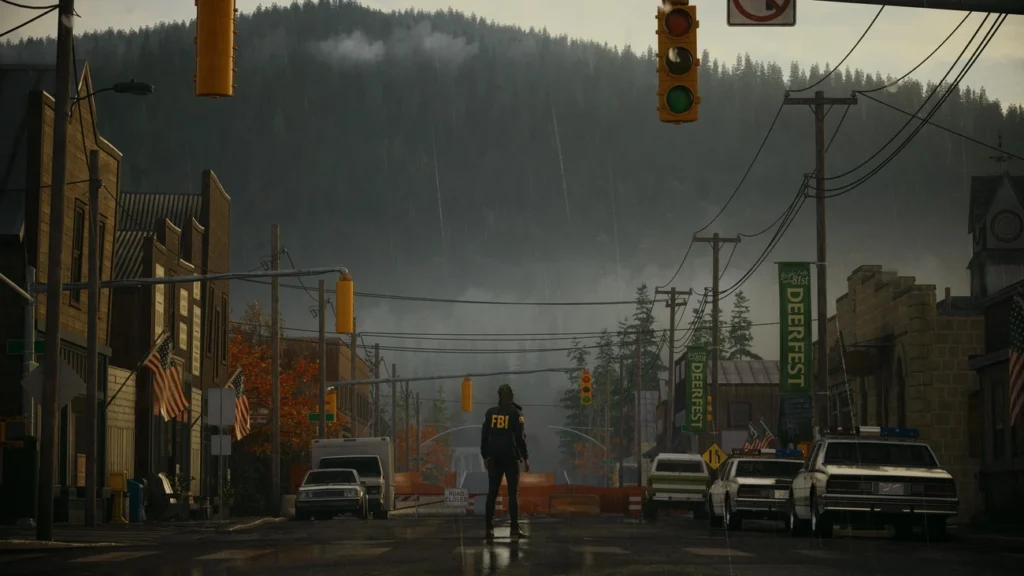
The Alan Wake 2 is a psychological horror masterpiece that took me about 17 hours to complete. This sequel shows that the best PC horror games don’t need constant jump scares to create genuine terror.
Dark Place Mechanics
The Dark Place has held Alan captive for 13 years, and it follows its own nightmarish rules. The Angel Lamp became my most vital tool that let me capture and manipulate light to reshape reality. Everything feels alive here – shadows whisper and walls move the moment you look away. The game’s advanced lighting system turns each corner into a possible gateway between different realities.
Survival Elements
Living through this nightmare demands smart resource management. My experience taught me to carefully manage limited supplies:
- Ammunition and batteries stay scarce throughout
- The unlimited sprint feature provides tactical advantages
- Crossbow bolts and flare guns need strategic planning for different threats
Story Integration
This game stands among the best horror titles on PC because it blends storytelling and gameplay naturally. Players switch between FBI Agent Saga Anderson’s investigation in Bright Falls and Alan’s desperate escape attempts from the Dark Place. The psychological effects stem from constant reality shifts and unique sanity mechanics. The Mind Place system lets players organize evidence with red string and palm cards on a branching tree, which creates the feeling of solving a mystery that might cost your sanity.
Alan Wake 2 creates exceptional atmospheric horror through tight spaces and overwhelming darkness. The game delivers intense psychological scares that make it substantially more frightening than the original.
Comparison Table
| Game Title | Main Setting | Key Gameplay Mechanics | Notable Features | Play Time | Primary Threat |
|---|---|---|---|---|---|
| Alien: Isolation | Space Station | Stealth, Survival | Dual-brain AI system, Motion tracker mechanics | Not mentioned | Adaptive Xenomorph |
| Amnesia: The Bunker | WWI Bunker | Resource management, Survival | Dynamic AI, Random elements, Generator system | Not mentioned | Adaptive creature |
| SOMA | Underwater Facility PATHOS-II | Exploration, Psychological horror | Deep philosophical story, Identity themes | Not mentioned | Existential horror, Robots |
| Visage | 1980s Suburban House | Sanity management | Four unique chapters, P.T.-inspired design | 15 hours | Supernatural entities |
| Darkwood | Forest/Woods | Top-down survival, Crafting | Day/night cycle (22.5 min), 200+ craftable items | Not mentioned | Various creatures |
| Outlast | Mount Massive Asylum | Stealth, Camera mechanics | Night vision gameplay, Battery management | Not mentioned | Asylum inmates |
| Phasmophobia | Haunted locations | 4-player co-op, Investigation | Voice recognition, 20+ ghost types | Not mentioned | Various ghost types |
| Dead Space (2023) | USG Ishimura | Strategic dismemberment | Intensity Director, Zero-G sections | Not mentioned | Necromorphs |
| Little Nightmares 2 | The Pale City | Platforming, Stealth | AI companion (Six), Environmental puzzles | Not mentioned | Various monsters including Teacher |
| Alan Wake 2 | Bright Falls/Dark Place | Survival horror, Investigation | Mind Place feature, Two protagonists | 17 hours | Dark entities |
Conclusion
These ten games show how PC horror has evolved well beyond simple jump scares and monster chases. Each title adds its own flavor – from Alien: Isolation’s groundbreaking AI to Phasmophobia’s multiplayer investigations. SOMA’s philosophical depths and Visage’s psychological torment make them stand out.
My experience with these games has shown that true horror takes many forms. Some games test survival skills through resource management and stealth. Others make players question reality through mind-bending narratives and tense atmospheres. Darkwood’s innovative top-down view and Dead Space’s improved dismemberment system prove that horror games continue to challenge creative limits.
PC horror’s finest titles do more than just scare us. They create lasting memories that stick with us after we step away from the screen. Players can hide from an adaptive Xenomorph or piece together Alan Wake’s reality-bending mystery. These games test our courage and challenge what we think horror can be.
Note that these ten titles represent some of the best horror experiences you can play. The genre keeps growing. New releases continue to challenge conventions and reshape what makes horror games great. There’s always another nightmare waiting to be found.